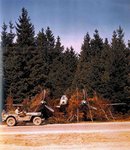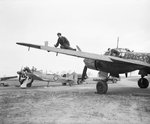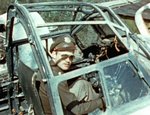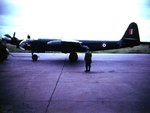- Thread starter
- #61
The Messerschmitt Me 210 was a German heavy fighter and ground-attack aircraft of World War II. The Me 210 was designed to replace the Bf 110 in heavy fighter role; design started before the opening of World War II. The first examples of the Me 210 were ready in 1939, but they proved to have poor flight characteristics from serious, unanticipated design flaws. A large-scale operational testing program throughout 1941 and early 1942 did not cure the aircraft's problems. The design eventually entered limited service in 1943, but was almost immediately replaced by its successor, the Messerschmitt Me 410 Hornisse ("Hornet"). The Me 410 was a further development of the Me 210, renamed so as to avoid the 210's notoriety. The failure of the Me 210's development program meant that the Luftwaffe was forced to continue fielding the outdated Bf 110, to mounting losses.

















































































